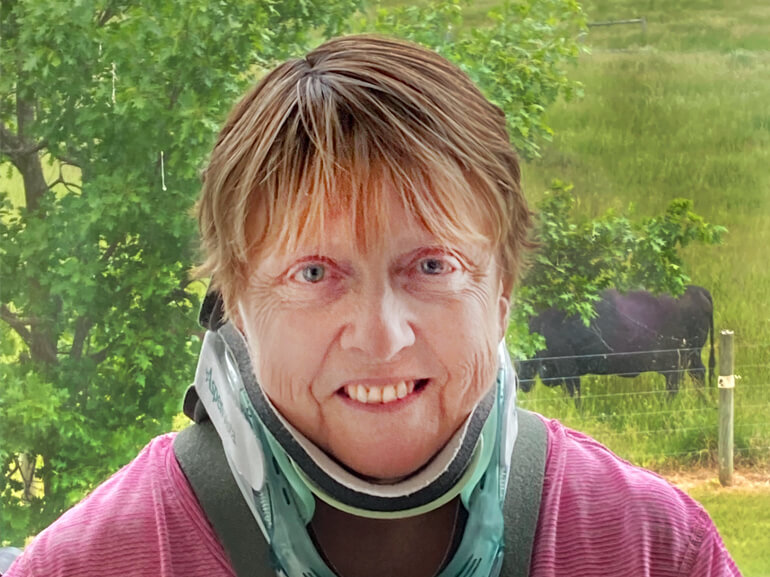Deborah's story

While enjoying a northeastern Pennsylvania camping trip with her family, Deb Shaffer lost her balance on rocky trail and fell nearly 35 feet down an embankment. First responders arrived to rescue and transport her to Geisinger Medical Center.
Doctors informed her she had fractured her back in several places and broken both legs, the right one was severe. The medical team went to work, operating on Deb and placing a stabilizing plate and screws in her right leg. After several weeks, the hardware was removed and Deb was instructed to keep weight off her leg allowing it the opportunity heal. She also had to wear a cervical collar on her neck and refrain from bending, lifting, twisting or lifting for six weeks to allow her spinal fractures to heal.
Weeks after her accident and surgery, Deb was struggling with pain and mobility. She knew her condition would prevent her from going home – it would be too hard to manage. “I knew I needed more therapy than I could get at the trauma hospital, so I selected Penn State Health Rehabilitation Hospital to continue my recovery,” Deb said.
“At the beginning of my inpatient rehabilitation stay, just to stand and pivot was impossible,” Deb said. “I could only put weight on my left leg, and I tried to hop at the trauma hospital but I just couldn’t - I had a fear of falling.”
The physician-led team assessed Deb and developed a plan to address her mobility challenges and get her back home.
Deb’s physical therapists had her do exercises on the parallel bars to help overcome her fear of falling. The bars are attached to the floor and gave Deb a feeling of stability not provided by a walker. That was important since Deb was still unable to put weight on her right leg.
With therapy, Deb’s confidence and strength grew and those sessions expanded. Therapists added stretching exercises with therapy bands and balance exercises -- reaching for objects while keeping weight on her left leg while remaining steady. Within days of continuous practice, Deb made great strides in her strength and balance; she was able to hop on her left leg while using a walker for support.
Meantime, occupational therapy (OT) got to work on Deb’s core and arm strength by having her sit on the edge of a mat table and reach for objects. The added gains in upper body strength bolstered her confidence. Therapists helped Deb learn modifications for everyday tasks using adaptive equipment such as a sock aid, reacher and long handled sponge which allowed her to extend her natural reach to prepare her for greater independence when she returned home.
Just twelve days into her inpatient rehabilitation stay, Deb was strong enough to stand and pivot with her weight bearing leg supported by a walker. Deb was ready to return home and get back to crocheting, sewing, reading and spending time with her children and grandchildren.
Reflecting on the physical and emotional challenges of recovery, Deb said she learned, “I can do this. I can push myself.” She also extends special gratitude to her therapists saying, “If it weren’t for them, I couldn’t have accomplished what I have.”